How To Set Up Australian Native Bee Hive Induction / Eduction / Budding or Soft Split From A Log

Our aim is to create a daughter hive from the mother colony located inside the log. To do this we are going to ensure that the bees only access to the mother hive is via the new empty box.
What is needed
1X Empty native bee hive – Available Options Here
1X 19mm Irrigation tee piece – A tee piece is needed as when the daughter colony starts to have brood, we need to allow separate access to both mother and daughter hives so fighting doesn’t occur.
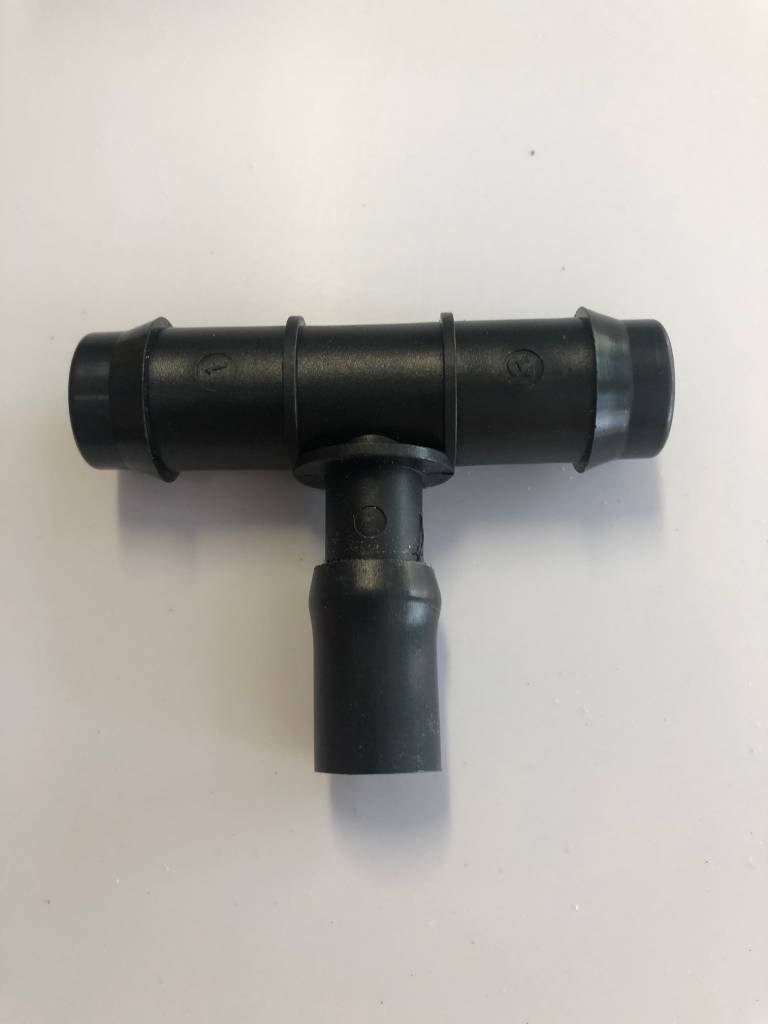
1X 19mm Irrigation straight tube (Optional)
Scenting a new entrance tube (This is an optional extra step but helps)
Steps
1. Where the current entrance to the log is, drill in approximately 10mm using an 18mm spade drill bit. This will allow the irrigation tube to fit snuggly. Do this either early morning or late at night so the bee numbers at the entrance is minimal.
2. Insert the straight irrigation tube and leave this in place for approximately 1 – 2 weeks. Over this time the bees will scent the tube up. When the new empty hive is in place, this to help the bees find the new entrance.
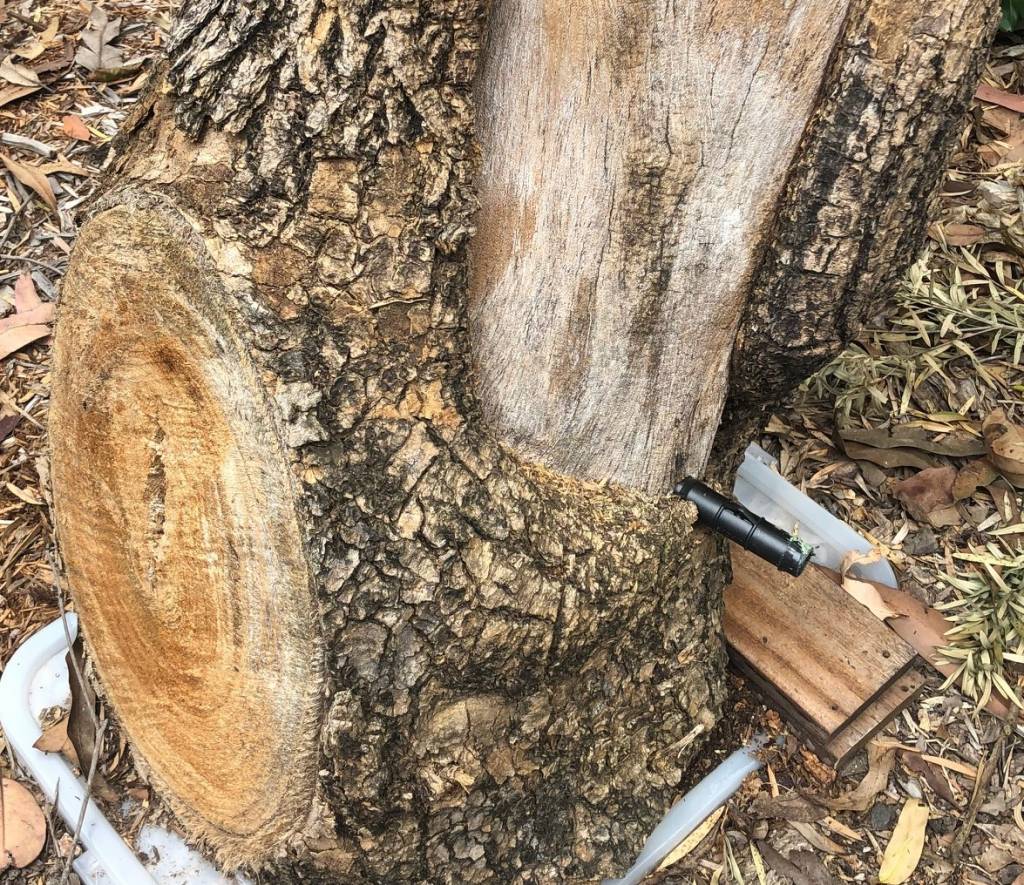
Setting up the hive
1. In the rear of the empty hive drill an 18mm hole. This will allow the 19mm irrigation tee to fit in snug. Make sure this matches up to tube coming out of the log.
2. If you have access to native bee wax you can soak a couple of grams in IPA (Isopropyl Alcohol). It will take a couple of days, but the IPA will break down the native bee’s wax. Once the IPA has dissolved the native bee wax spread this all around the inside of the empty hive. The IPA will evaporate leaving behind only the native bee’s wax. (This is an optional extra step but helps speed up the building process)
3. Depending on the style hive you have purchased you may have two or three levels. It is recommended to provide access to only one section of the brood chamber, so the bees don’t become too overwhelmed. This can be achieved with a thin clear plastic film.
Connecting the empty hive to the log
1. Either early morning or when it is dark is best to connect the empty hive to the log so the bees have more time to adjust to the changes for the first time.
2. If you placed a straight irrigation tube in place for the bees to scent up. Remove this and swap this out for the irrigation tee piece, make sure that the side of the tee is blocked off.
3. Connect the empty hive to the tee piece.
4. Place the scented, straight irrigation pipe now in the front of the empty hive.

5. Note the position of where the original entrance was from the log. Move the log and the empty bee hive backwards so that the entrance of the new empty bee hive is in the same location that the entrance of the log was. This will be approximately 35cm. What this does is allow the bees that know the exact position of the logs entrance to now find the new empty hive. If we just place the empty hive in front of the log and do not shift the log and hive backwards the field bees will fly past the empty hive and not be able to enter the log as we have blocked this up with the irrigation tube. IF you are unable to shift backwards as the hive may be in an existing tree, don’t worry it will just take the bees a little longer to work out the new entrance. Using a scented entrance tube can make this easier.
6. Monitor the hive over the coming months to see if the queen has stated to produce brood in the new hive.
7. Once brood has started in the daughter colony now will be a good time to open the side of the tee piece to allow to separate entrances.
8. Being nature this can take 3, 4, 5, 6 months even longer.
Setup Using a Funnel
In the example below the bees had used the knot of the log as their entrance. Using the same steps as above we place a funnel over the entrance to ensure the bees walk through the empty daughter hive.
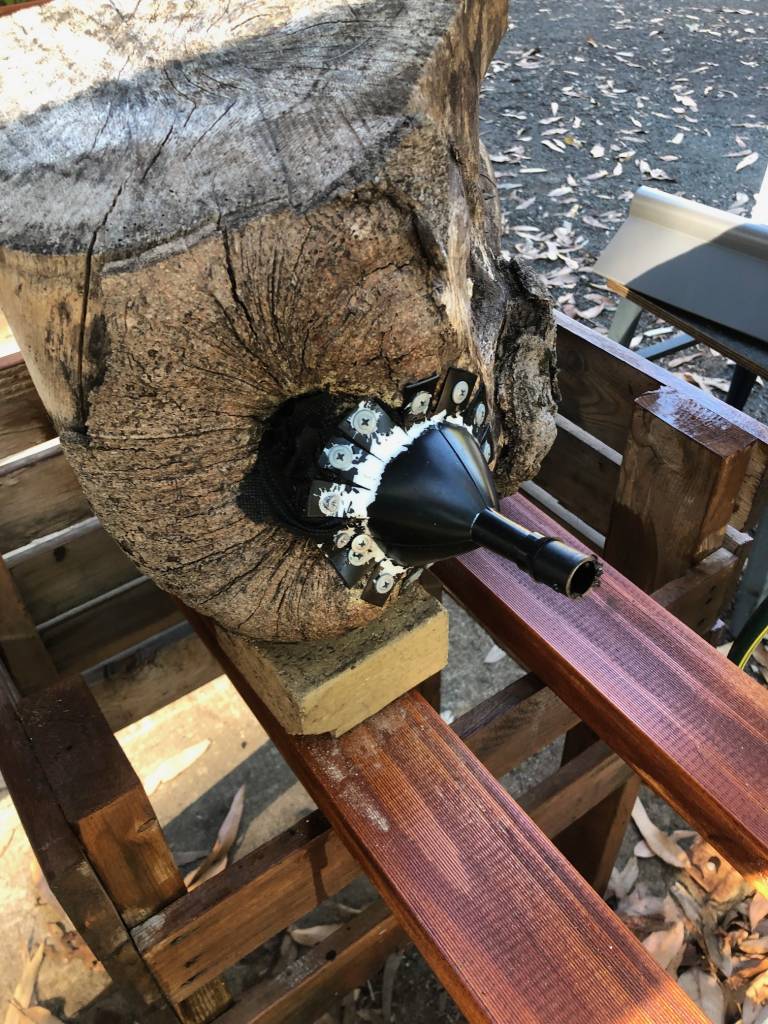
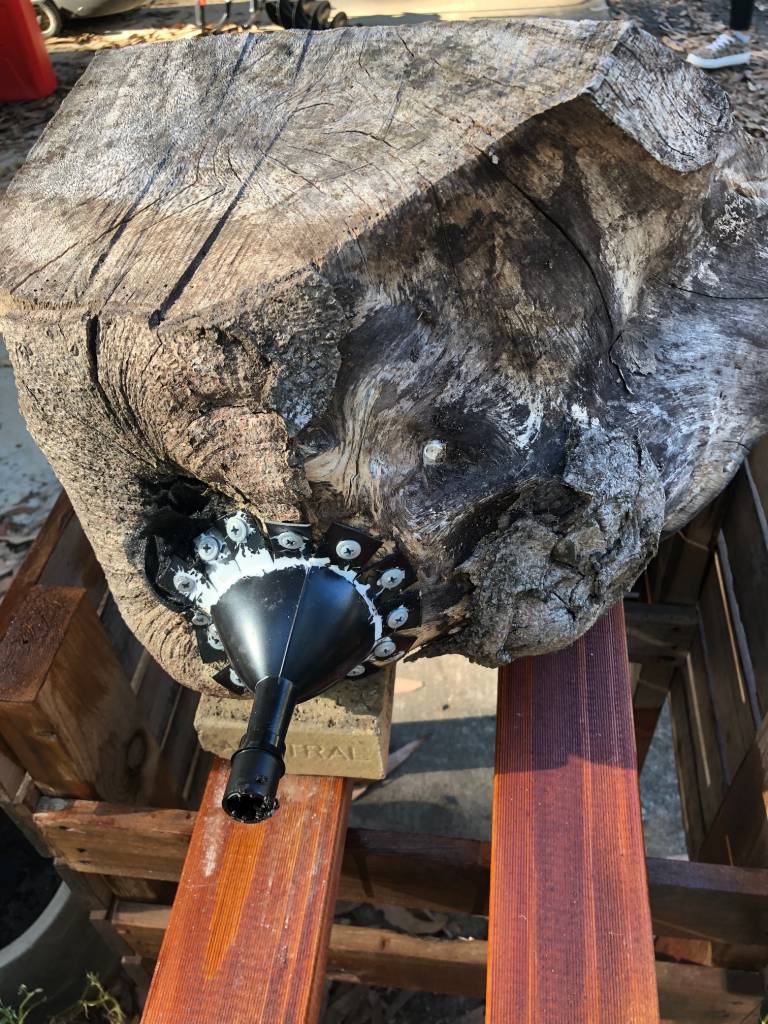
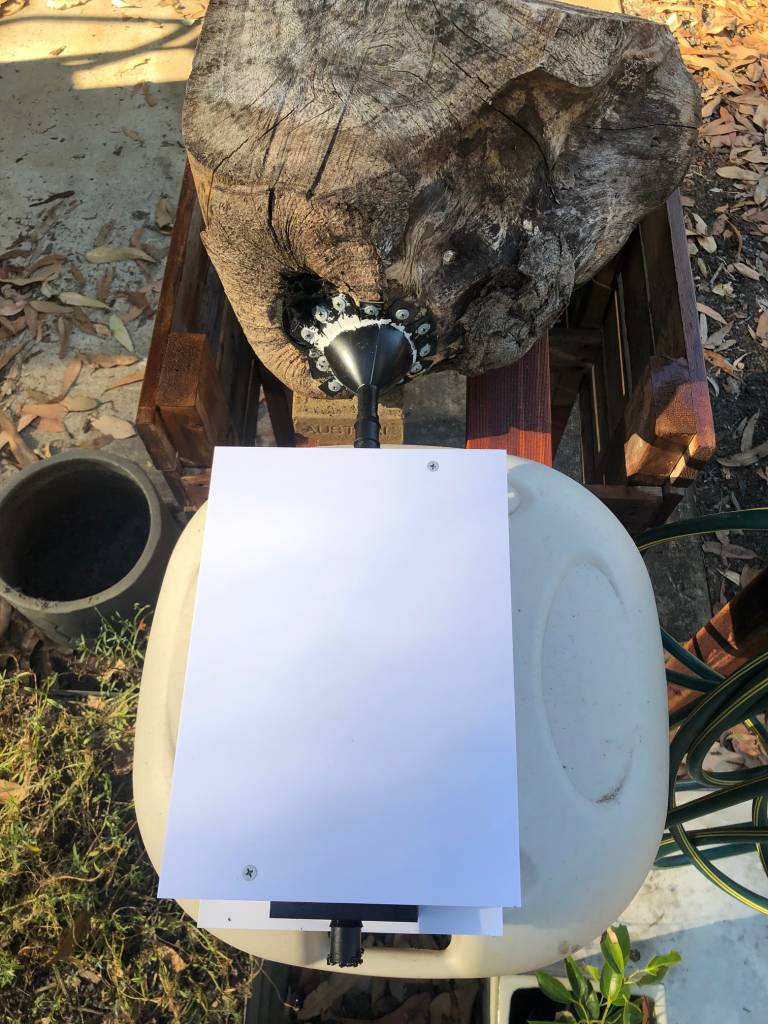
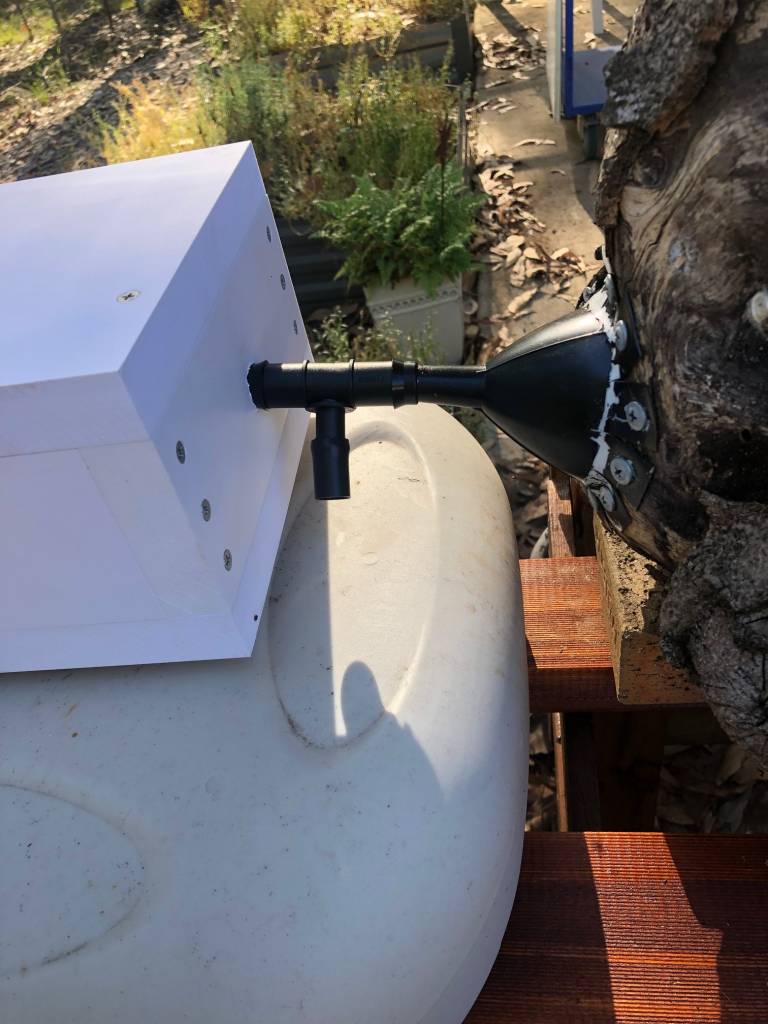
Have a look at our write up on how to split a stingless Australian native bee hive.
If you have any questions on setting up your eduction please feel free to contact us on 07 3206 0552 or info@abeec.com.au
